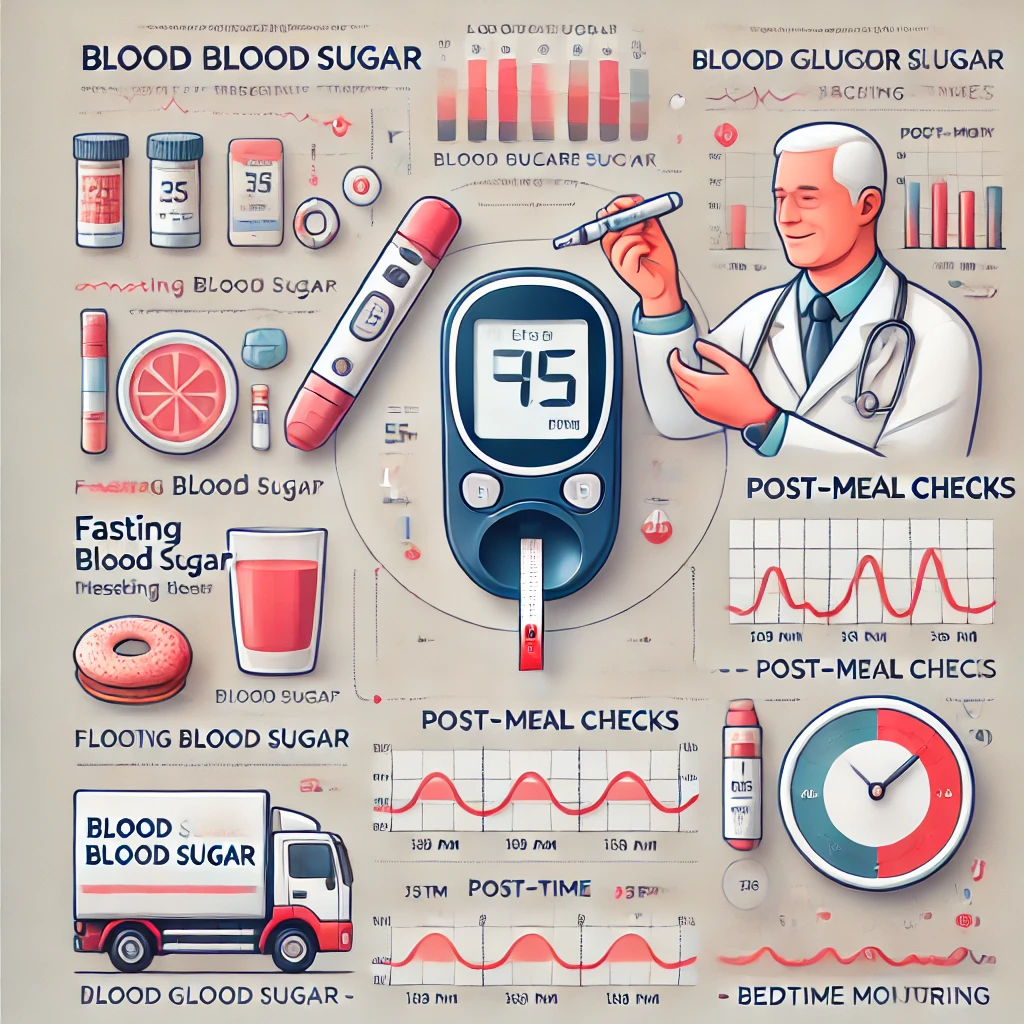Blood Sugar Monitoring: How Often Should You Check Your Levels?
Introduction
Blood sugar monitoring is a crucial aspect of diabetes management, helping individuals maintain stable glucose levels and avoid complications. But how often should you check your blood sugar? The answer depends on several factors, including your type of diabetes, treatment plan, and overall health goals.
In this guide, we’ll explore blood sugar monitoring frequency, recommended testing schedules, and expert guidelines to help you make informed decisions about your health.
Why Is Blood Sugar Monitoring Important?
Regular blood sugar monitoring allows individuals with diabetes to:
- Track how food, physical activity, and medications affect blood glucose levels.
- Detect high or low blood sugar early to prevent complications.
- Adjust their diabetes management plan as needed.
- Maintain better control over their condition and prevent long-term health risks.
Without consistent monitoring, managing diabetes effectively becomes challenging, increasing the risk of complications such as nerve damage, kidney disease, and heart problems.
How Often to Check Blood Glucose Levels
The frequency of blood sugar checks varies based on the type of diabetes and treatment plan. Below are general recommendations based on expert guidelines.
1. Type 1 Diabetes
Individuals with Type 1 diabetes typically need to check their blood sugar multiple times a day to maintain tight control over their glucose levels.
Recommended Blood Sugar Testing Times:
- Before meals and snacks
- Before and after exercise
- Before bedtime
- Occasionally during the night (especially if experiencing hypoglycemia)
- When feeling unwell or stressed
Total daily checks: 4–10 times per day, depending on insulin therapy and lifestyle factors.
2. Type 2 Diabetes (On Insulin Therapy)
People with Type 2 diabetes who use insulin (especially multiple daily injections) should monitor their blood sugar regularly to adjust their insulin doses.
Recommended Frequency:
- Before meals
- At bedtime
- Occasionally two hours after meals
- Before and after exercise
- When experiencing symptoms of high or low blood sugar
Total daily checks: 2–4 times per day, but may vary based on the individual’s insulin regimen.
3. Type 2 Diabetes (Not on Insulin)
For individuals with Type 2 diabetes who manage their condition with oral medications or lifestyle changes, blood sugar monitoring may be less frequent.
Testing Schedule:
- A few times per week or as recommended by a healthcare provider
- Before and after significant lifestyle changes (e.g., new diet or exercise routine)
- During periods of illness or increased stress
Total daily checks: Varies; some individuals may only need to check once daily or several times per week.
4. Gestational Diabetes
Pregnant women with gestational diabetes need to monitor their blood sugar closely to protect both their health and their baby’s well-being.
Optimal Times to Test Blood Sugar:
- Fasting (first thing in the morning)
- Before meals
- One or two hours after meals
- Before bedtime
Total daily checks: 4–7 times per day, depending on healthcare provider recommendations.
Blood Glucose Monitoring Guidelines
The American Diabetes Association (ADA) and other leading health organizations provide guidelines for blood sugar targets and monitoring frequency.
Blood Sugar Targets (General Guidelines)
| Time of Check | Target Range (mg/dL) |
|---|---|
| Fasting (morning) | 80–130 mg/dL |
| Before meals | 80–130 mg/dL |
| Two hours after meals | Less than 180 mg/dL |
| Bedtime | 100–140 mg/dL |
Note: Target ranges may vary based on individual health conditions and doctor recommendations.
Factors Affecting Blood Sugar Testing Frequency
Certain situations may require more frequent monitoring, such as:
- Newly diagnosed diabetes – Frequent testing helps establish patterns and manage fluctuations.
- Changes in medication – Adjusting insulin or oral medications may require more frequent checks.
- Physical activity changes – Exercise affects blood sugar levels, sometimes requiring additional monitoring.
- Illness or infection – Being sick can cause unpredictable blood sugar changes.
- Pregnancy – Blood sugar needs close monitoring during pregnancy, especially for those with gestational diabetes.
When to Contact Your Doctor
Seek medical guidance if you experience:
- Consistently high blood sugar levels above your target range
- Frequent episodes of low blood sugar (hypoglycemia)
- Unexplained fluctuations in blood sugar despite maintaining your routine
- Symptoms of diabetes complications, such as vision changes or slow wound healing
Your healthcare provider can help adjust your diabetes management plan to better control your glucose levels.
FAQs
How Many Times a Day Should a Diabetic Check Their Blood Sugar?
It depends on the type of diabetes and treatment plan. Type 1 diabetics may need 4–10 tests daily, while Type 2 diabetics on insulin should check 2–4 times per day. Those managing diabetes with diet and medication may require fewer tests.
What Are the Best Times to Check Blood Sugar Levels?
- Before meals – Helps determine fasting glucose levels.
- After meals – Shows how food affects blood sugar.
- Before and after exercise – Ensures safe blood sugar levels.
- Before bedtime – Prevents nighttime hypoglycemia.
Should I Check My Blood Sugar If I Feel Fine?
Yes, even if you feel fine, monitoring helps detect hidden fluctuations and ensures stable glucose levels.
Can Checking Blood Sugar Too Often Be Harmful?
While frequent monitoring helps control diabetes, excessive testing without changes to management strategies can cause unnecessary stress. Follow doctor recommendations for an optimal balance.
Conclusion
Understanding how often to check blood sugar is key to effective diabetes management. By following blood glucose monitoring guidelines, adjusting for lifestyle factors, and working with your doctor, you can achieve better control and prevent complications.
📩 Stay informed! Subscribe to our newsletter for more diabetes management tips and health updates.
